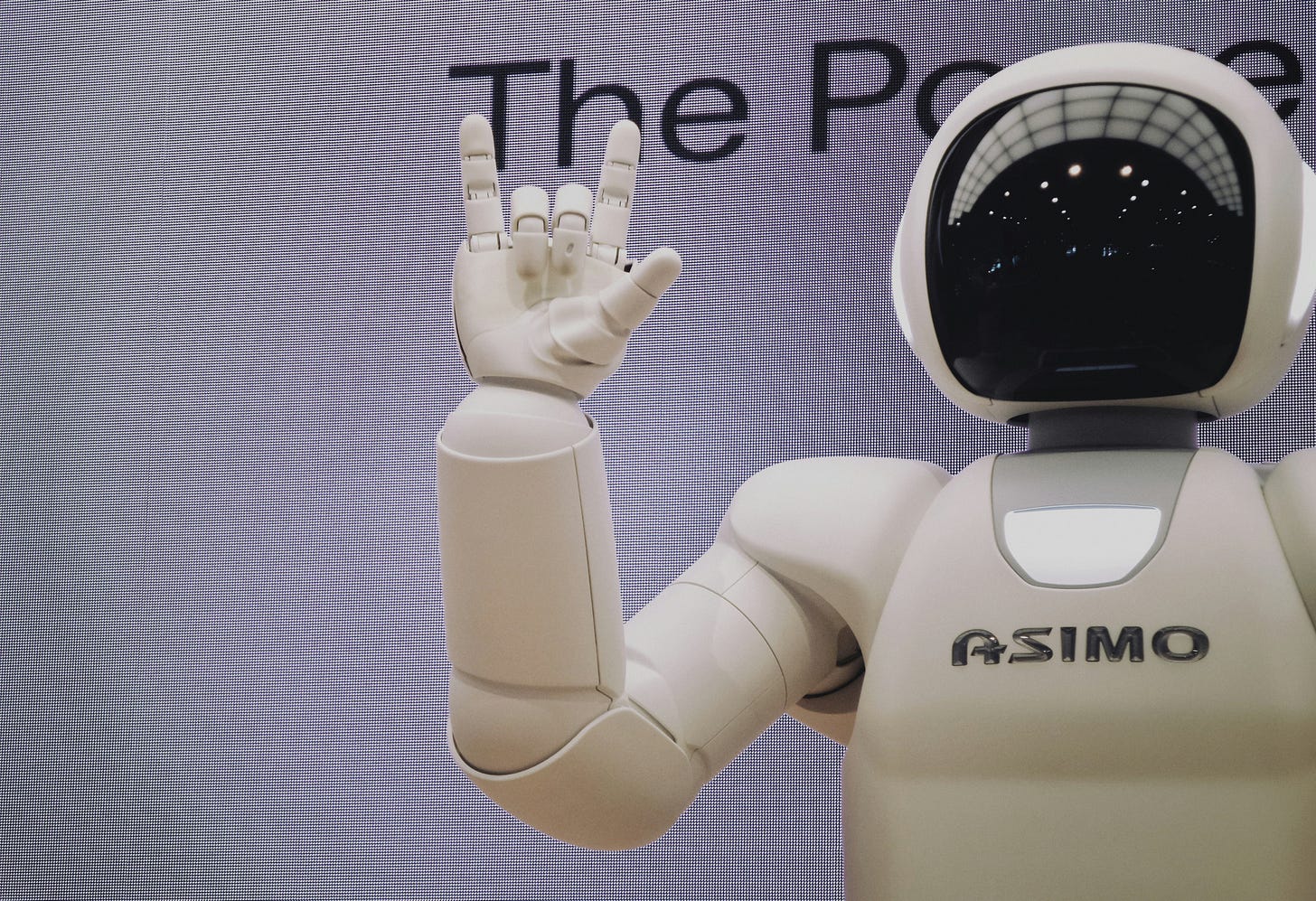Embodied AI: The next leap in Robotics
How AI-Powered Robotics is Moving from Hype to Real-World Impact
Robotics has long faced the challenge of integrating intelligence with physical action. While AI has revolutionized information-based industries, the leap from processing data to interacting with the real world remains complex. The dream of robots seamlessly operating in homes, factories, and cities has often felt just out of reach.
Yet, recent developments suggest we are inching closer to a transformative moment for robotics. With breakthroughs in reinforcement learning, simulation, and multimodal AI, embodied AI - the fusion of AI with physical systems - is set to redefine automation. Following the panel discussion on “Embodied AI” at our AI House Davos 2025, I wanted to share some of the key advancements shaping the future of robotics. Are we on the verge of a robotics revolution, or are there still fundamental barriers to overcome?
Breakthroughs and Innovations in Embodied AI
The Role of Simulation in Robotics
One of the biggest obstacles in robotics has been the high cost and complexity of training AI-driven physical systems in the real world. Enter simulation. Today, advanced neural simulators allow AI models to learn and refine their behaviors before ever setting foot (or wheel) in the real world.
Synthetic environments provide scalable training: AI systems can practice in high-fidelity virtual worlds, learning how to navigate, manipulate objects, and interact with dynamic environments.
AI models can generate their own training data: With self-play techniques, simulators act as adversaries, constantly pushing AI to learn from novel and extreme scenarios that are difficult to collect from real-world data.
Simulation bridges the gap between virtual and physical: The latest advances enable AI-trained in simulation to transfer to real-world settings with minimal adaptation, accelerating deployment timelines.
The increasing sophistication of simulation is a game-changer for industries like autonomous driving and industrial robotics.
AI-Powered Autonomy: From Trucks to Industrial Robots
Self-Driving Trucks Are Nearing a Commercial Reality
Autonomous vehicles have been in development for over a decade, but one of the biggest hurdles has been achieving full-scale deployment. While passenger car autonomy remains a work in progress, self-driving trucks are poised for a breakthrough.
Case Study: Waabi
Waabi is set to launch driverless Class 8 trucks by the end of 2025, a major milestone for AI-driven logistics.
The trucking industry has a severe labor shortage: With nearly 900,000 truck driver vacancies in the U.S. alone, automation offers a necessary and scalable solution.
Simulation-driven safety testing: Waabi’s AI continuously trains in an advanced virtual environment, ensuring it can handle real-world unpredictability with unprecedented reliability.
Autonomous trucking represents one of the first commercially viable applications of embodied AI at scale, promising efficiency gains and enhanced road safety.
Industrial Robotics: Expanding Beyond Manufacturing
Robots in industrial environments are evolving beyond traditional fixed-arm automation. The latest generation of mobile robots is bringing autonomy to settings where human labor is scarce, such as inspections in oil and gas facilities, chemical plants, and warehouses.
Case Study: ANYbotics:
ANYbotics’ quadruped robot, ANYmal, is already deployed globally to inspect and monitor industrial environments.
Deep reinforcement learning enables adaptability: AI-powered robots can now handle stairs, dynamic obstacles, and real-world terrain with over 99% reliability.
Embedded AI allows real-time decision-making: Unlike cloud-based AI models, these robots process sensor data locally, making instant adjustments based on their surroundings.
With industrial settings facing labor shortages and increasing safety regulations, robots like ANYmal offer a practical and scalable solution for physical-world automation.
The Challenges of Embodied AI
Why Robotics Is Harder Than Software-Only AI
Bringing AI into the physical world introduces new complexities beyond what we’ve seen with language models and software automation.
Physical Constraints: Unlike AI that operates in the digital realm, robots must deal with physics: Weight, balance, power consumption, and durability all matter.
Perception and Multimodal Inputs: Unlike software that processes text or images in isolation, embodied AI must integrate multiple sensor inputs: Cameras, LiDAR, radar, microphones—to accurately interpret the world.
Safety and Regulation: Unlike software bugs, physical-world AI failures can lead to accidents. Proving safety before deployment is crucial, requiring robust testing and regulatory approval.
Humanoid Robots: Still a Long Road Ahead?
The hype around humanoid robots has grown rapidly, with major players investing heavily in this space. But are we truly close to humanoids performing useful work at scale?
Current humanoid robots excel in controlled environments, but they are not yet ready for complex, unstructured human interactions. Additionaly, Hardware limitations persist: Human-like dexterity, grip strength, and manipulation remain unsolved challenges. Practical applications will likely start in industrial settings before expanding to broader use cases.
So, while humanoid robots are making strides, we are still several years away from seeing them functionally integrated into everyday life.
The Future of Embodied AI: What Comes Next?
Safer, More Adaptive AI Systems
The future of embodied AI lies in creating systems that can reason, adapt, and interact more naturally with humans and environments.
Contextual awareness will improve: Future AI-powered robots will better understand human movement, gestures, and speech, making them easier to deploy in collaborative settings.
Hardware and AI will co-evolve: Smarter AI will reduce the need for expensive, high-precision hardware by compensating for minor mechanical inaccuracies.
Regulatory advancements will shape adoption: Governments and industry stakeholders must work together to create safety standards that enable broader AI deployment while mitigating risk.
Final Thoughts
We are witnessing the dawn of embodied AI. While there are still many challenges ahead, industries like trucking, industrial automation, and logistics are already seeing tangible benefits from AI-powered robots. The dream of general-purpose humanoid robots may still be a decade away, but in many ways, embodied AI is already here—changing the way we work, move, and interact with technology.
As we continue to invest in this space at Merantix Capital, I’d love to hear your thoughts. Where do you see embodied AI making the biggest impact in the next few years?





